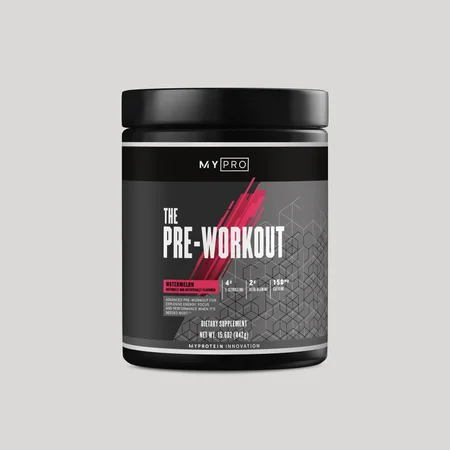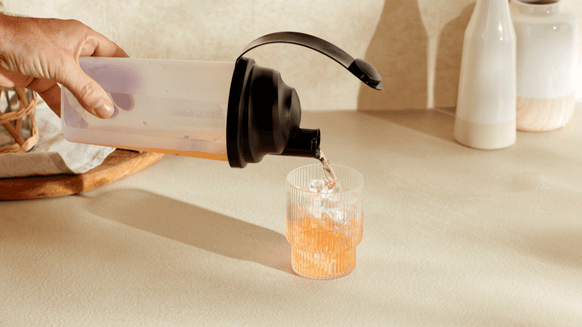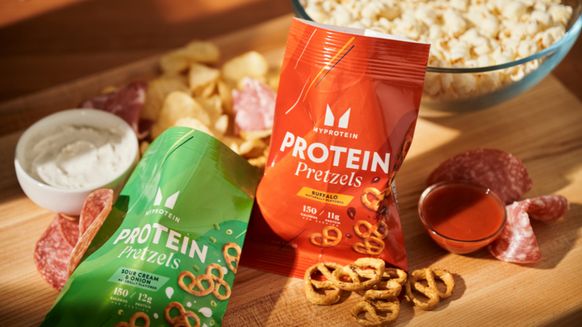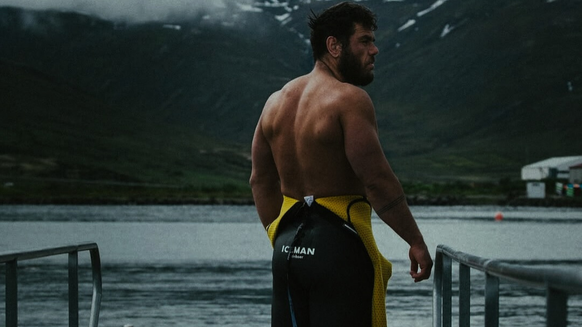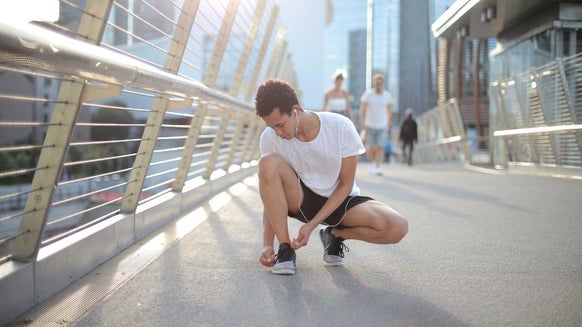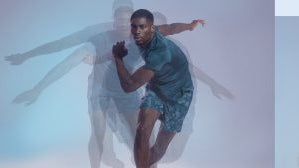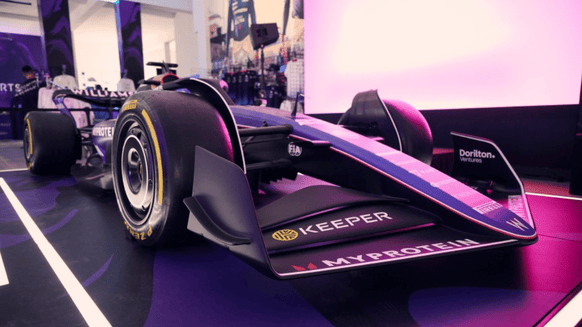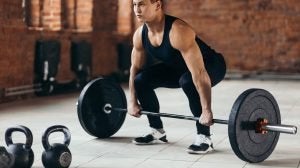
The Romanian deadlift (RDL) has gone from humble origins to one of the most popular deadlift variations in gyms across the world. It's great for hitting the posterior chain of muscles, including the hamstrings and glutes.
Originally popularized by Romanian weightlifter Nicu Vlad — which is how it got its name — the RDL is a staple of many Olympic training regimes. Read on for tips on how to correct and improve your RDL form.
- Romanian deadlift benefits
- Romanian deadlift technique
- RDL variations
- Common mistakes with the Romanian deadlifts and how to fix them
- RDL advice for beginners
- Alternative hamstring exercise
- FAQ's about Romanian deadlifts
Romanian Deadlift Benefits
Similar to the conventional deadlift, the Romanian Deadlift (RDL) recruits many muscles, making it one of the best exercises when loading hip hinge movements. Because of its compound nature, it allows for increased muscle recruitment and fibre activation.
Posterior chain strength
The RDL extends the hips, predominantly activating the glutes and hamstrings, supported by the smaller glute muscles, lower back, and traps.
These muscles are all part of the posterior chain, an important but often overlooked muscle region, contributing to overall strength.
Athletic development
Athletic movements, like sprinting, rely heavily on the posterior chain to create the hip extension needed for a fast, forward movement.
Extending your hips from a flexed position, the RDL is not only good for muscle development, but also for the joints and range of motion.
The RDL can also strengthen the hamstrings through a longer range of movement than other leg curl alternatives, which can protect the muscles from injury during high-speed athletic movements.
Increased hip mobility
The full range of movement offered by the RDL can be used to develop muscle flexibility, particularly in the hamstrings.
By controlling the weight down to the bottom of the movement, the muscle spindles improve at coping with increased length, allowing the body to move freely without restriction. This can help to reduce stiffness that can commonly occur around the hips and lower back.
Injury prevention
In sport and in day-to-day life, the hips and knee joints are put under a lot of stress, which can lead to injuries.
RDL strengthens the hamstrings, helping to protect these joints and prevent other injuries during dynamic athletic exercise that requires high speeds and changes of movement.
Romanian Deadlift Technique
Start with the bar in a rack ready to lift it from a standing start. Hold the bar just outside your hips, soften your knees (slight bend), tighten your core, and keep your shoulder blades tucked in to maintain a neutral spine.
Start to slide the bar down by moving your hips backwards as if you’re pushing them towards the wall behind you, almost like you’re trying to sit down on a chair that’s too far away.
Lower the bar past your knees, trying to keep your shins perpendicular to the floor until you feel your hamstrings stretch out, while keeping your hips high and back neutral.
Pull the bar back up using your hamstrings and glutes (not lower back), focusing on pulling the knees wide and those muscles.
RDL Variations
Single-leg Romanian deadlift
This is a great variation for balance and coordination.
Make sure you keep your spine neutral and hips square throughout this movement, with your back leg pushed back as far as possible to get a great stretch and the control needed from the movement.
If you feel your hips lifting, check and make sure the foot of your back foot is pointing straight down to the floor.
Dumbbell Romanian deadlift
The dumbbell variation can be great for developing range of movement and getting some more depth. You’ll find you’re less restricted by the bumper plates you might have on a barbell.
Grasp a dumbbell in each hand and complete the same movement, keeping the dumbbells close to the body and making sure you pinch the shoulder blades.
Smith machine Romanian deadlift
This is a great starting point if you’re not used to the movement as the Smith machine will provide a fixed movement so you can focus on the muscles you're using and look to increase muscle development in strength and size.
Set the bar up at the same height and turn the bar to take the weight. Your mid-foot should be directly below the bar, and as you push your hips back, you should aim for the bar to be in line with your shoelaces.
Kettlebell Romanian deadlift
On this variation you can go for a slightly wider stance. You’ll be able to get a good movement through a full range. The kettlebell can finish between your feet, which can then progress into a kettlebell swing.
You might feel it a little more in the outside of the hamstrings as well as the top outer glutes (biceps femoris and gluteus medius) with the slightly wider stance, so it’s a great variation to add to workouts.
Common Mistakes with the Romanian Deadlift and How to Fix Them
Rounding your back
This is a common issue. Sometimes it could be as simple as the weight being too heavy to lift with a neutral spine, so you need to reduce the weight and build your way up, as well as performing back extensions to strengthen that area.
However, it could also be something that you’re just not really used to. If you haven’t done many deadlifts before, you might not have the muscular coordination to bend from your hips and lengthen the spine.
Exercises like cat-cows (think happy cat, angry cat on all fours) can help. Or if you need to get some feedback and don’t have a coach, you can put some electrical or medical tape on your stomach between your belly button and sternum. Then try to keep the feeling of tension, while you hinge from your hips.
Not using a full range of motion
Again, this could be due to weight but might also be due to the flexibility of the hamstrings. The main thing to focus on is feeling a little stretch at the bottom of the movement.
If you don’t feel it, have the confidence to sink slightly further. Lighten the load if you need, as range of movement is always more important than a heavier weight.
Not maintaining the correct position
This one is key to performing a positive movement you can benefit from. Your posture will make sure you train properly to develop and adapt.
If you lose your position, you can cause the body to try and compensate to tighten, which can cause more issues.
The best way to avoid this is if you feel yourself changing the position, stop and take a breath to try and correct it. If you’re not sure, you can always video yourself or get some advice from a professional.
RDL advice for beginners
- A good place to start for those looking to add the RDL into their routine is learning about controlling the spine. Planks can help this as well as bear crawls, cat-cows, and single arm rows.
- This will give you some of the necessary control needed to keep a long spine while you perform the movement.
- Also, performing hip thrusts and glute bridges to build up the muscles you will be using for the movement is a great way to gain the mind-muscle connection to get the most from the RDL.
- When deciding to perform the movement for the first time, it’s always best to start off light and train your muscles to perform the movement well and with control.
- You can start with a kettlebell or dumbbells trying to perfect the hinge of your hips before loading the movement with an Olympic bar at 20 kg.
Alternative Hamstring Exercises
Barbell bridges/hip thrusts
This is a great exercise that you can load up with a good amount of weight. Set up with shoulders on a bench or padded platform and the bar over your hips (a pad here can help the position feel a lot more comfortable).
Tuck your core in to keep a neutral spine and press through your heels to lift the weight up with your hips and control it back down.
Glute hamstring raise
This can be quite challenging without a machine, but you can use a pad for your knees on the floor and something or someone to hold your heels in place.
This relies on you going from a kneeling position, lowering yourself down with a slight bend in the hips, and bringing yourself back up to the starting position. You can also perform this as a negative-only movement (Nordic hamstring lowers) for strong hamstrings.
Hamstring curls
If you have a leg curl machine, this is an easy one to perform. Set yourself up and gradually increase the weight. However, if you don’t have the resistance machine, you can still do a variation with a stability ball (or a suspended movement trainer).
Lie on your back with heels on a stability ball and knees at a 90-degree angle. Push your hips up to fully extend and then roll the ball away from you and back in.
Conventional deadlifts
This is a variation of a similar movement to the RDL, picking up a bar from the floor. The focus is less on the hamstrings and a little more on lower back and glutes. You should treat it a little more like a squat pattern when you bend from your hips and knees towards the bar.
Really focus on gripping the bar and engaging your back to keep the spine long, then pushing the floor away with your heels to get the bar up to your hips.
FAQs about Romanian deadlifts
What’s the difference between a deadlift and a Romanian deadlift?
A Romanian deadlift focusses a little more on the hamstrings by elongating them. You need to keep your hips higher throughout the movement which will create the length and tension through the hamstrings.
The lower leg will also remain vertical in the RDL variation, whereas the traditional method has the hips coming lower and knees moving forward of the ankle line.
How many sets and reps should I do for a Romanian deadlift?
Sets and reps will always be determined by your goals: 1-5 reps for strength, 6-12 reps for hypertrophy and 12+ for endurance.
If you are starting out, aiming for a lower weight and higher reps to build up a tolerance is the best start. The number of sets could be from 2-4 sets depending on your ability and training history.
Should you go heavy on Romanian deadlift?
Going too heavy too soon on an RDL can cause a few issues. It might be that you overload your back a bit or compensate through your body, or you could even over stretch and strain your hamstrings.
To start with, you should start off light and use the movement as more of an accessory exercise. But that doesn’t mean after you have built up strong base, that you couldn’t go heavy for the movement.
The movement is a key training tool for Olympic weightlifters. They go heavy, but they do have a solid foundation and rehearse the movement a lot.
Are Romanian deadlifts more effective?
When done well, the RDL is an amazing exercise. However, like all other exercises, it can be overused if not progressed.
As part of a progressive program, the exercise is a must to see regularly but can also be interchanged with other exercises to keep the body developing.
Take home message
Whether you’re training for strength, power, performance, or injury prevention, the RDL should be a part of your sessions. Although it’s a hard exercise to master and perfect, it’s definitely worth the time you put in due to the progress you can see from using the exercise.
Take your time with the movement and make sure you learn correct techniques to secure a long spine and a tight core.
MORE EXPERT ARTICLES HERE:
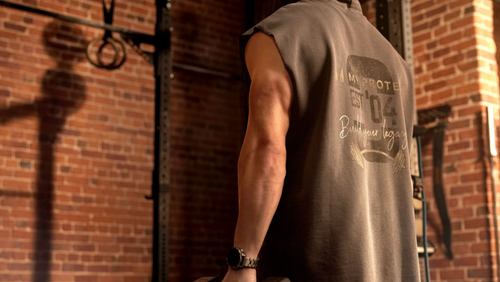
Dumbbell Shoulder Workouts: 9 Exercises to Build Muscle
Build bigger shoulders with these dumbbell workouts....
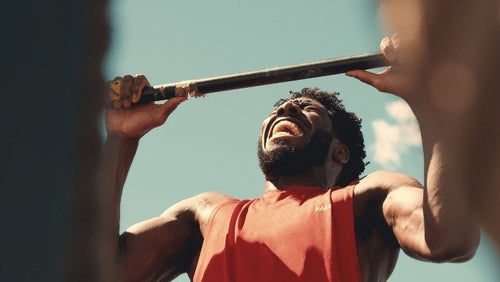
Master The Wide Grip Pull-Up
A great compound movement to fit into your routine....
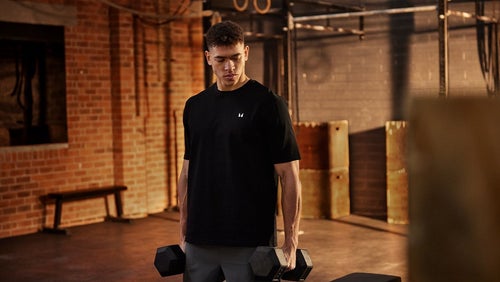
Lateral Raise Variations
If your lateral raises need a lift, these three variations could inject some lif...


